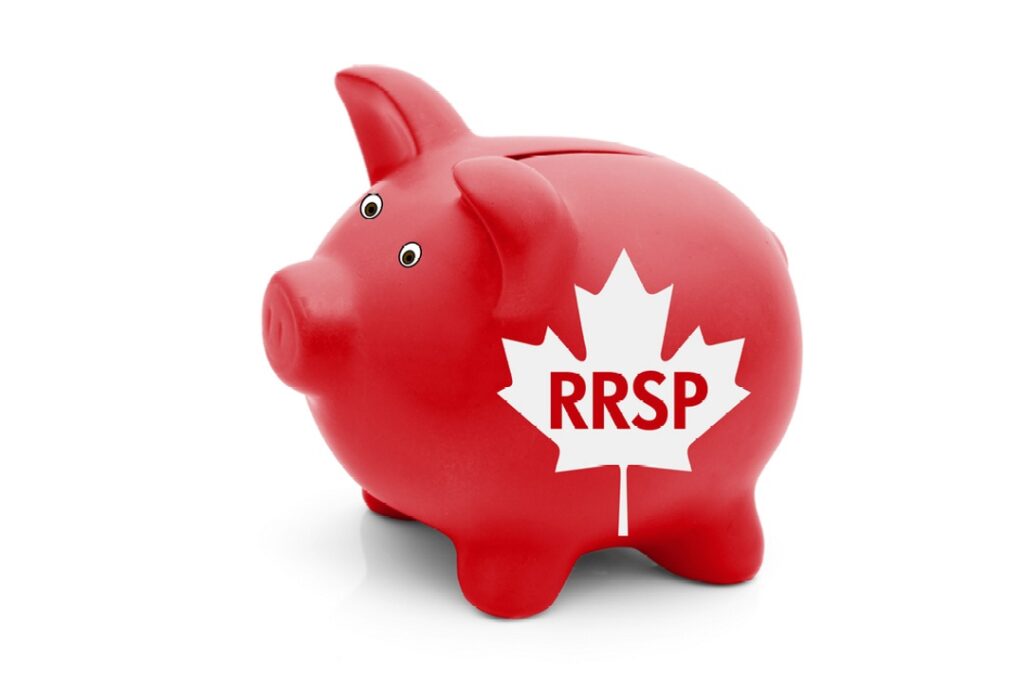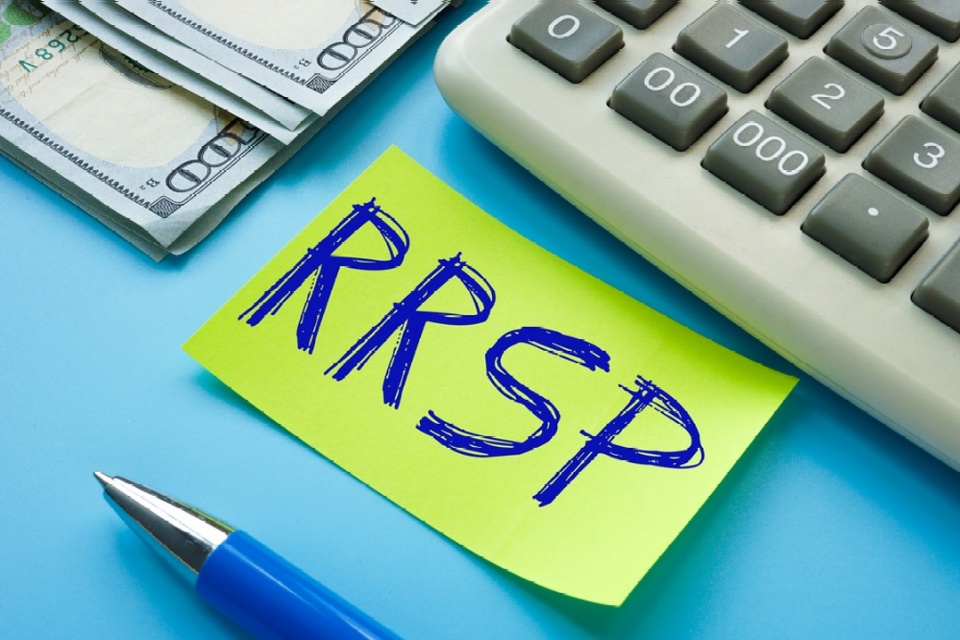Hey there! Welcome to a Beginner’s Guide to RRSPs. So, you’re thinking about saving for retirement, or maybe you’re looking to get a bit more out of your RRSP? Perfect! You’re in just the right spot.
RRSPs are a big deal when it comes to planning for those golden years, offering a neat way to stash away cash for the future while snagging some pretty sweet tax perks right now.
If the whole RRSP thing feels a bit like a puzzle, don’t worry – you’re not alone. That’s exactly why I wrote this article: to help you piece it all together.
I’ll walk you through everything from how much you can toss into your RRSP each year, to how it all plays out with taxes, and even what happens when it’s time to start using that money. And I’ll do it all in a way that’s easy to follow.
Whether you’re scratching your head about your next contribution, curious about how your RRSP investments affect your taxes, or just planning ahead for a comfy retirement, I’m here to walk you through the basics.
So, let’s dive in together and make sense of RRSPs, turning those retirement savings dreams into reality.
Your Guide to RRSPs

Introduction to Registered Retirement Savings Plans (RRSPs)
Let’s begin by exploring the foundation of RRSPs. At its core, an RRSP is a vehicle designed by the Canadian government to encourage individuals to save for retirement.
This account offers a dual benefit: it enables you to save for your future while providing immediate tax advantages.
By contributing to an RRSP, you’re not just securing your retirement; you’re also potentially lowering your tax bill today.
How RRSPs Work
The principle behind RRSPs is relatively straightforward. When you contribute to your RRSP, those contributions reduce your taxable income for the year, effectively deferring the tax on that income until retirement.
This deferral is not just about delaying taxes; it’s an opportunity for your investments to grow tax-free over the years. It’s akin to planting a seed and watching it grow undisturbed, maximizing the potential for a fruitful retirement.
Contribution Rules and Limits
Let’s review the most important RRSP contribution rules.
Annual Contribution Limits
One of the key features of RRSPs is the contribution limit. Each year, you’re allowed to contribute a certain percentage of your income up to a maximum limit. This ensures that everyone has the opportunity to save for retirement within a structured framework.
If you don’t reach this limit in a given year, the unused portion carries forward, allowing you to increase your contributions in future years.
Determining Your Contribution Room
Keeping track of your contribution room is essential for maximizing your RRSP benefits. After filing your taxes, you’ll receive a Notice of Assessment from the Canada Revenue Agency (CRA), which details your remaining contribution room.
Additionally, you can access this information through the CRA’s My Account online portal.
Staying informed about your contribution room enables you to plan your contributions effectively, ensuring you make the most of your RRSP.
Tax Advantages of RRSPs

Immediate Tax Benefits
One of the most compelling reasons to contribute to an RRSP is the immediate tax relief it provides. By contributing to your RRSP, you are essentially reducing your taxable income for the year, which can result in a lower tax bill.
This immediate benefit not only provides financial relief at tax time but also encourages a culture of saving for retirement. Think of it as a reward from the government for making a wise decision for your future.
Tax-Deferred Growth
Beyond the immediate tax benefits, RRSPs offer a long-term advantage in the form of tax-deferred growth. This means that any income you earn within your RRSP – whether from interest, dividends, or capital gains – is not taxed as long as it remains in the plan.
This allows your investments to compound over time without the drag of taxes, potentially leading to significantly greater growth than would be possible in a taxable account. It’s a way to ensure that your savings are working as efficiently as possible towards your retirement goals.
RRSP Investment Options
When it comes to RRSPs, you’re not limited to a one-size-fits-all investment strategy. You have the flexibility to choose from a variety of investment options to suit your risk tolerance and financial goals.
Whether you prefer stocks, bonds, exchange-traded funds (ETFs), or mutual funds, your RRSP can accommodate a diverse investment portfolio.
This flexibility allows you to tailor your retirement savings plan to your unique financial situation, optimizing your potential for growth and security in retirement.
Making the Most of Your RRSP
To truly capitalize on the benefits of your RRSP, it’s important to adopt a strategic approach to your contributions and investments.
This might involve setting up regular contributions to take advantage of dollar-cost averaging, or rebalancing your portfolio periodically to maintain your desired asset allocation.
By actively managing your RRSP, you can maximize its growth potential and build a robust foundation for your retirement.
Withdrawal Rules and Implications

RRSP Withdrawal Rules
While RRSPs are primarily designed for long-term savings, understanding the rules around withdrawals is crucial.
Generally, withdrawals made before retirement are subject to taxation at your current income tax rate. However, there are specific programs, such as the Home Buyers’ Plan (HBP) and the Lifelong Learning Plan (LLP), which allow for tax-free withdrawals under certain conditions.
It’s important to approach withdrawals carefully, as they can affect your retirement savings and tax situation.
Tax Implications of Withdrawals
When you withdraw funds from your RRSP, the amount is added to your taxable income for the year, and taxes are withheld at the source.
The rate of withholding tax varies depending on the amount withdrawn and your province of residence.
This system ensures that you account for the potential tax liability associated with early withdrawals, encouraging the preservation of RRSP funds for retirement.
Converting RRSPs to RRIFs
As you approach retirement, you’ll need to make decisions about converting your RRSP into a form of retirement income. One common option is the Registered Retirement Income Fund (RRIF).
A RRIF allows you to continue the tax-deferred growth of your investments while beginning to withdraw retirement income.
There are minimum withdrawal requirements for RRIFs, which are designed to ensure that the fund is used for retirement income over time.
Understanding the conversion process and the associated rules is key to managing your retirement savings effectively.
Planning for Retirement Withdrawals
Strategic planning for withdrawals from your RRSP can significantly impact your financial security in retirement.
By considering factors such as your expected income needs, tax bracket, and the timing of withdrawals, you can develop a withdrawal strategy that minimizes tax liability and maximizes income sustainability.
It’s often beneficial to consult with a financial advisor to tailor a withdrawal plan to your specific circumstances, ensuring that you make the most of your retirement savings.
RRSP Contribution Strategies

Maximizing Your Contributions
Contributing to your RRSP is not just about putting money away for retirement; it’s about doing so in a way that maximizes your financial benefits.
One key strategy is to contribute as much as you can up to your limit each year. If you’re unable to reach your maximum contribution limit, consider strategies like automatic monthly contributions to help build your savings consistently over time.
This not only helps in budgeting for retirement savings but also takes advantage of the power of compounding interest.
Timing Your Contributions
The timing of your RRSP contributions can also play a significant role in maximizing your tax benefits.
Making contributions early in the year allows your investments more time to grow tax-deferred, potentially increasing your retirement savings.
Additionally, if you expect to be in a higher tax bracket in the future, contributing now can provide greater tax savings.
Conversely, if you anticipate being in a lower tax bracket in the near term, delaying your contribution could be beneficial.
Planning for the Long Term
While RRSPs are a powerful tool for retirement savings, it’s important to view them as part of a broader financial plan.
Diversifying your investments and considering other saving vehicles, such as Tax-Free Savings Accounts (TFSAs), or Registered Pension Plans (RPP) through your employer, can provide additional flexibility and tax advantages.
A well-rounded approach to saving and investing can help ensure that you are prepared for retirement, regardless of what the future holds.
Overcoming Common RRSP Challenges
Saving for retirement is a marathon, not a sprint, and it’s common to encounter hurdles along the way. Whether you’re facing financial constraints or getting a late start on your RRSP contributions, there are strategies to help you stay on track towards achieving your retirement goals.
Maximizing RRSP Contributions Despite Financial Constraints
Financial constraints can make it challenging to contribute to your RRSP, but there are several strategies you can employ to keep your retirement savings growing:
- Budget Review and Adjustment: Take a close look at your monthly budget to identify non-essential expenses that can be reduced or eliminated. Redirecting even a small amount of money to your RRSP can make a significant difference over time.
- Automatic Contributions: Setting up automatic contributions to your RRSP can help you prioritize retirement savings. Even small, regular contributions can grow substantially due to compounding interest.
- Utilize Windfalls: Consider using unexpected windfalls, such as tax refunds, bonuses, or inheritances, to boost your RRSP contributions. These one-time influxes of cash can significantly impact your retirement savings without affecting your regular budget.
Tips for Catching Up If You Start Contributing Later in Life
Starting your RRSP contributions later in life means having less time to take advantage of compounding interest, but there are still effective ways to catch up:
- Maximize Your Contributions: If you’re able to, contribute the maximum amount to your RRSP each year. Those aged 50 and over can also take advantage of the RRSP catch-up contribution room accumulated from previous years.
- Consider a Spousal RRSP: If your spouse or common-law partner has a higher RRSP contribution room, contributing to a spousal RRSP can help increase your combined retirement savings. This strategy also helps in income splitting during retirement, potentially lowering your overall tax burden.
- Focus on Growth-Oriented Investments: While it’s important to be mindful of risk, incorporating growth-oriented investments into your RRSP can help accelerate the growth of your retirement savings. Consulting with a financial advisor can help you adjust your investment strategy to strike the right balance between growth and risk.
- Delay Withdrawals: If possible, consider delaying your RRSP withdrawals beyond the minimum retirement age. This allows your investments more time to grow and can increase your retirement income.
By adopting these strategies, you can navigate financial challenges and make meaningful progress towards your retirement goals, even if you’re starting later or facing budget constraints.
Remember, every contribution counts, and it’s never too late to start saving for retirement.

Mistakes to Avoid with RRSPs
Navigating the path to a comfortable retirement requires careful planning and strategic decision-making.
While RRSPs offer a valuable opportunity to save for the future, there are common pitfalls that can hinder your progress.
Being aware of these mistakes and knowing how to avoid them can significantly enhance your retirement readiness.
Over-Contribution Beyond Your Limit
One of the most straightforward mistakes to avoid is contributing more to your RRSP than your contribution limit allows. Over-contributions are subject to a penalty tax of 1% per month on the excess amount over $2,000. To prevent this:
- Regularly Check Your Contribution Room: Keep an eye on your Notice of Assessment from the CRA, which outlines your contribution limit for the year.
- Monitor Your Contributions: If you contribute to multiple RRSPs, ensure the total contributions don’t exceed your limit.
Withdrawing Funds Prematurely
Early withdrawals from your RRSP can be tempting, especially in times of financial strain, but they come with significant tax implications and reduce your long-term growth potential. To avoid unnecessary withdrawals:
- Build an Emergency Fund: Having savings set aside for unexpected expenses can reduce the need to dip into your RRSP.
- Explore Other Financial Options: Consider alternatives like loans or lines of credit, which may be more cost-effective in the long run.
Not Investing Your Contributions
Simply contributing to an RRSP is not enough; you need to invest those contributions to benefit from compound growth.
Leaving your RRSP funds in cash or low-interest savings options can severely limit their growth potential. To maximize your savings:
- Choose Investments Wisely: Based on your risk tolerance and retirement timeline, select a mix of investments that offers the potential for growth. An investment professional is a good idea for those who need help understanding types of investments and strategies.
- Review and Adjust Your Portfolio Regularly: Ensure your investments align with your changing financial goals and market conditions.
Ignoring Tax Implications of RRSP Withdrawals
It’s essential to understand the tax implications of withdrawing from your RRSP during retirement.
Withdrawals are taxed as income, which can affect your overall tax burden and eligibility for government benefits. To mitigate the impact:
Plan Your Withdrawal Strategy: Consider your expected income sources and tax bracket in retirement to determine the most tax-efficient withdrawal strategy.
Consider Converting to a RRIF: Converting your RRSP to a Registered Retirement Income Fund (RRIF) can provide more control over your withdrawals and potentially lower your tax liability.
By steering clear of these common mistakes and adopting a proactive approach to managing your RRSP, you can ensure that your retirement savings work as hard as you do towards securing a financially stable future.
Conclusion & FAQs
As we wrap up “A Beginner’s Guide to RRSPs: Maximizing Your Retirement Savings”, it’s clear that RRSPs are more than just a savings vehicle; they are a critical component of a well-rounded retirement strategy.
With the insights and strategies we’ve explored, from maximizing contributions to avoiding common pitfalls, you’re now better equipped to navigate the complexities of retirement planning.
Remember, the journey to a comfortable retirement is unique for each individual. It requires patience, discipline, and a commitment to making informed decisions.
By leveraging the advantages of RRSPs—tax benefits, compound growth, and flexible investment options—you can build a robust foundation for your financial future.
Whether you’re just starting out, playing catch-up, or fine-tuning your existing retirement plan, the key is to stay engaged with your savings goals.
Regularly review your financial plan, adjust your contributions as your circumstances change, and seek professional advice when needed. Your future self will thank you for the actions you take today to maximize your retirement savings.
In the end, the goal of this guide is not just to inform but to inspire action. So, take that next step, whether it’s increasing your contribution, rebalancing your portfolio, or simply starting a conversation with a financial advisor.
Your retirement dreams are within reach, and with each strategic move, you’re closer to turning those dreams into reality.
Thank you for joining us on this journey through the ins and outs of RRSPs. Here’s to maximizing your retirement savings and achieving the financial security you deserve.
What qualifies as earned income for RRSP purposes?
For RRSP purposes, “earned income” includes several types of income that qualify for determining your RRSP contribution room. This typically encompasses:
– Employment income (salaries and wages)
– Net income from self-employment
– Net rental income from real property
– Certain types of royalty income
– Research grants received
It’s important to note that investment income, such as interest, dividends, and capital gains, does not qualify as earned income for RRSP purposes. The Canada Revenue Agency provides a detailed definition of earned income for RRSP contribution room calculations, ensuring that individuals can accurately determine their allowable contribution limits each year.
How much can I contribute to my RRSP each year?
The annual contribution limit for RRSPs is 18% of your earned income from the previous year, up to a maximum limit set by the Canada Revenue Agency (CRA). Remember, any unused contribution room from previous years carries forward, allowing you to contribute more in the future.
What happens if I over-contribute to my RRSP?
Over-contributing to your RRSP by more than $2,000 results in a penalty tax of 1% per month on the excess amount. It’s important to monitor your contributions closely to avoid these penalties.
Can I withdraw money from my RRSP before retirement?
Yes, you can withdraw funds from your RRSP at any time, but withdrawals are subject to taxation at your current income tax rate. There are exceptions under the Home Buyers’ Plan and Lifelong Learning Plan, which allow for tax-free withdrawals under specific conditions.
How are RRSP withdrawals taxed in retirement?
RRSP withdrawals in retirement are taxed as income. The amount of tax you pay depends on your total income for the year and your tax bracket. Planning your withdrawals strategically can help minimize your tax liability.
